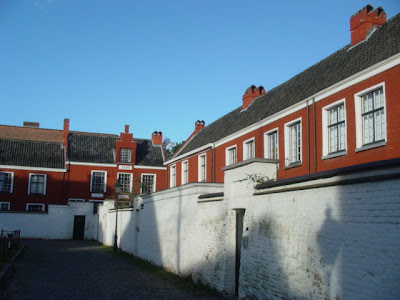A béguinage (French) or begijnhof (Dutch) is a collection of small buildings used by Beguines. These were various lay sisterhoods of the Roman Catholic Church, founded in the 13th century in the Low Countries , comprising religious women who sought to serve God without retiring from the world.
Description
A béguinage comprises a courtyard surrounded by small dwellings. It is often encircled by a wall and secluded from the town proper by one or two gates. Poor and elderly beguines were housed here by benefactors.
The first béguinages were set up in the 12th century in what has subsequently become the French speaking part of Belgium Belgium , the Netherlands
The beguines were a religious movement of women. Their success, according to the Belgian historian Henri Pirenne, was due to a surplus of women occasioned by violence, war, military and semi-military operations, which took the lives of many men. Great numbers of women had no option but to unite and collectively secure the aid of rich benefactors.
Similarly, nuns' convents in the 12th century enjoyed substantial initial success. Stricter rules within Cistercian and other abbeys, however, caused many women to seek less strict surroundings. Moreover, these abbeys' initial success necessitated the refusal of a great many applications for admission. As an additional obstacle, in several cases a certain degree of prosperity was required as a condition for admission to a regular nunnery.
Town orders, such as the Dominicans, which did not make this requirement, were more successful for that very reason.




















Niciun comentariu:
Trimiteți un comentariu